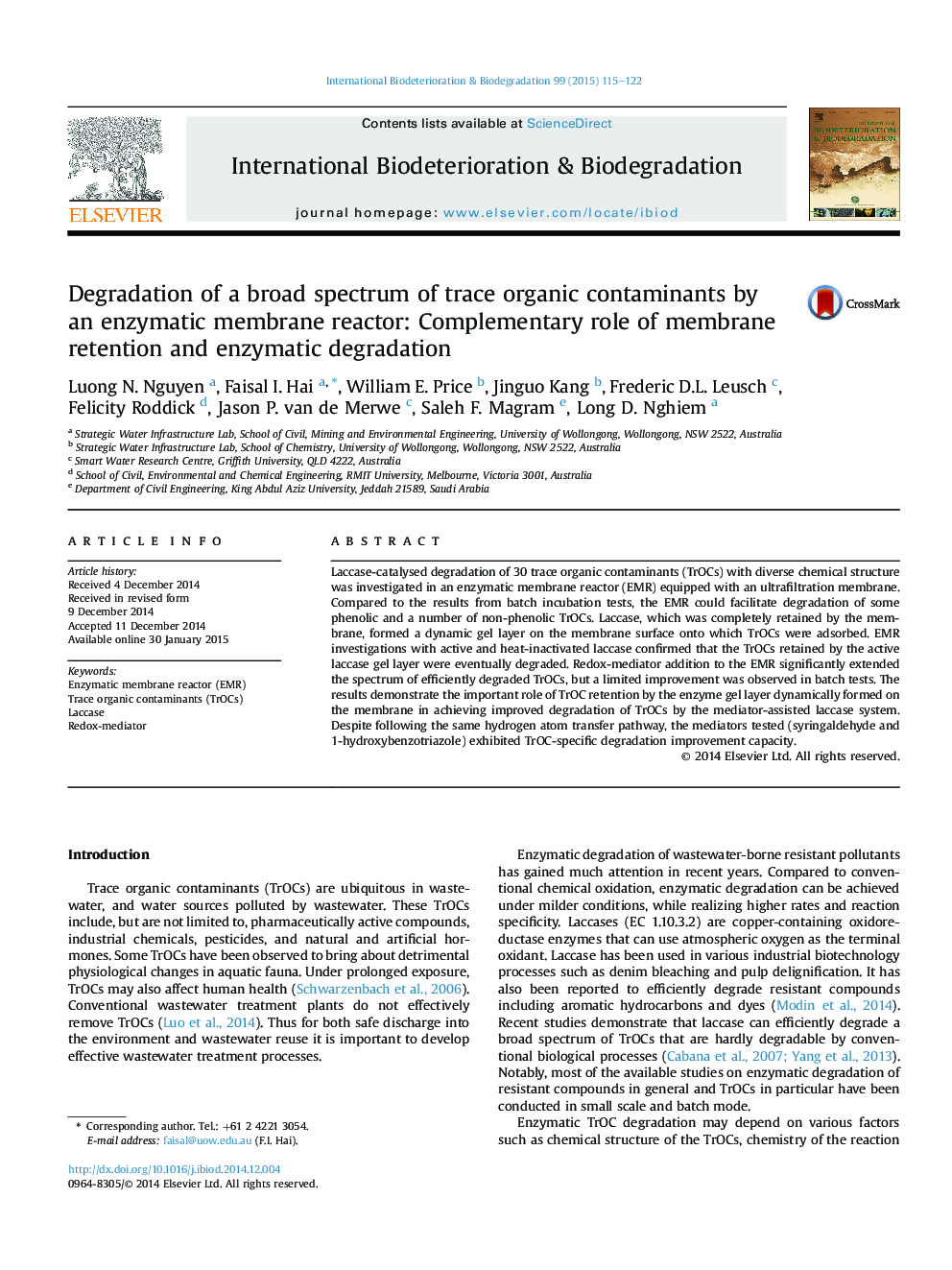| Article ID | Journal | Published Year | Pages | File Type |
|---|---|---|---|---|
| 4364649 | International Biodeterioration & Biodegradation | 2015 | 8 Pages |
Abstract
Laccase-catalysed degradation of 30 trace organic contaminants (TrOCs) with diverse chemical structure was investigated in an enzymatic membrane reactor (EMR) equipped with an ultrafiltration membrane. Compared to the results from batch incubation tests, the EMR could facilitate degradation of some phenolic and a number of non-phenolic TrOCs. Laccase, which was completely retained by the membrane, formed a dynamic gel layer on the membrane surface onto which TrOCs were adsorbed. EMR investigations with active and heat-inactivated laccase confirmed that the TrOCs retained by the active laccase gel layer were eventually degraded. Redox-mediator addition to the EMR significantly extended the spectrum of efficiently degraded TrOCs, but a limited improvement was observed in batch tests. The results demonstrate the important role of TrOC retention by the enzyme gel layer dynamically formed on the membrane in achieving improved degradation of TrOCs by the mediator-assisted laccase system. Despite following the same hydrogen atom transfer pathway, the mediators tested (syringaldehyde and 1-hydroxybenzotriazole) exhibited TrOC-specific degradation improvement capacity.
Related Topics
Life Sciences
Environmental Science
Environmental Science (General)
Authors
Luong N. Nguyen, Faisal I. Hai, William E. Price, Jinguo Kang, Frederic D.L. Leusch, Felicity Roddick, Jason P. van de Merwe, Saleh F. Magram, Long D. Nghiem,
